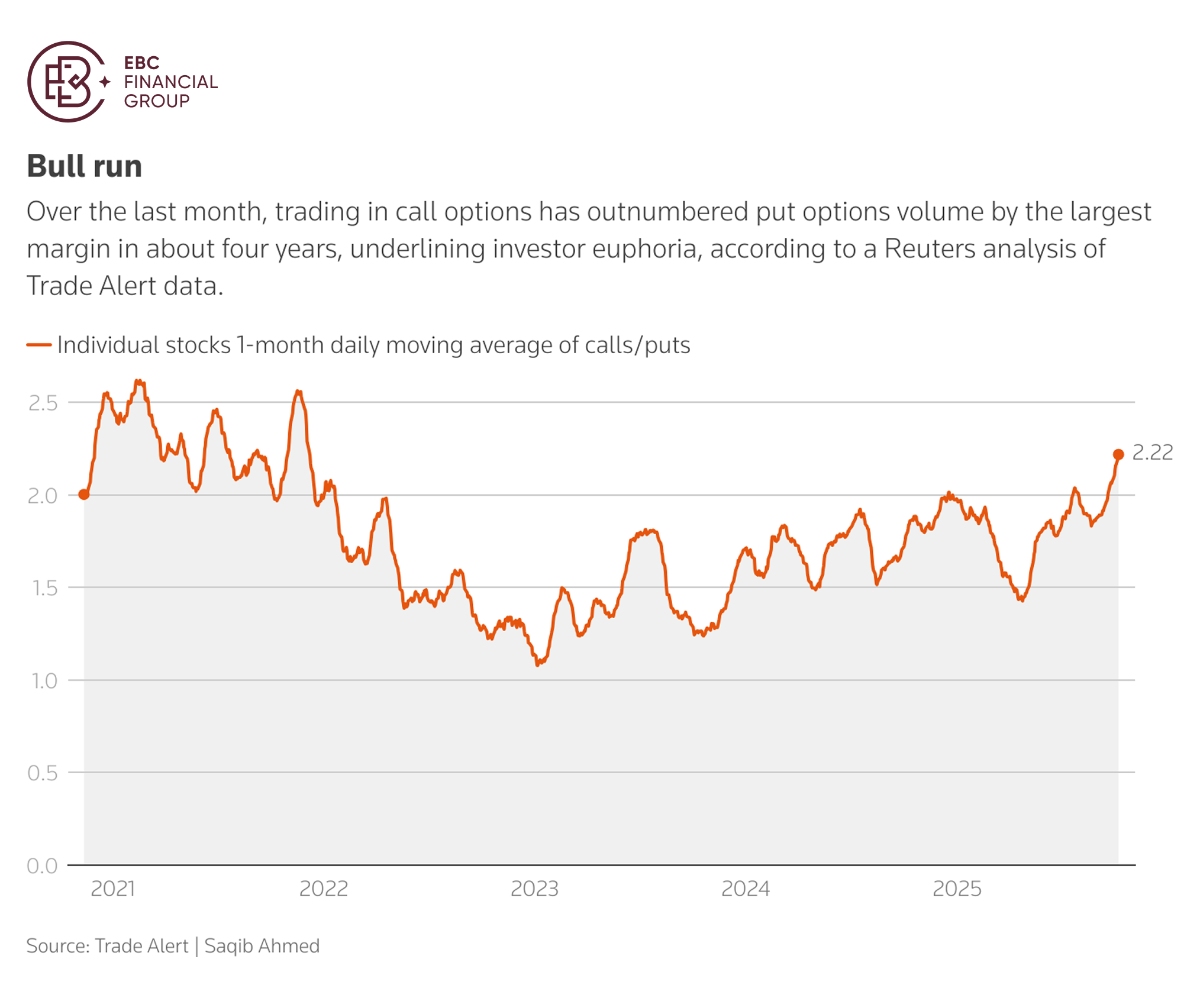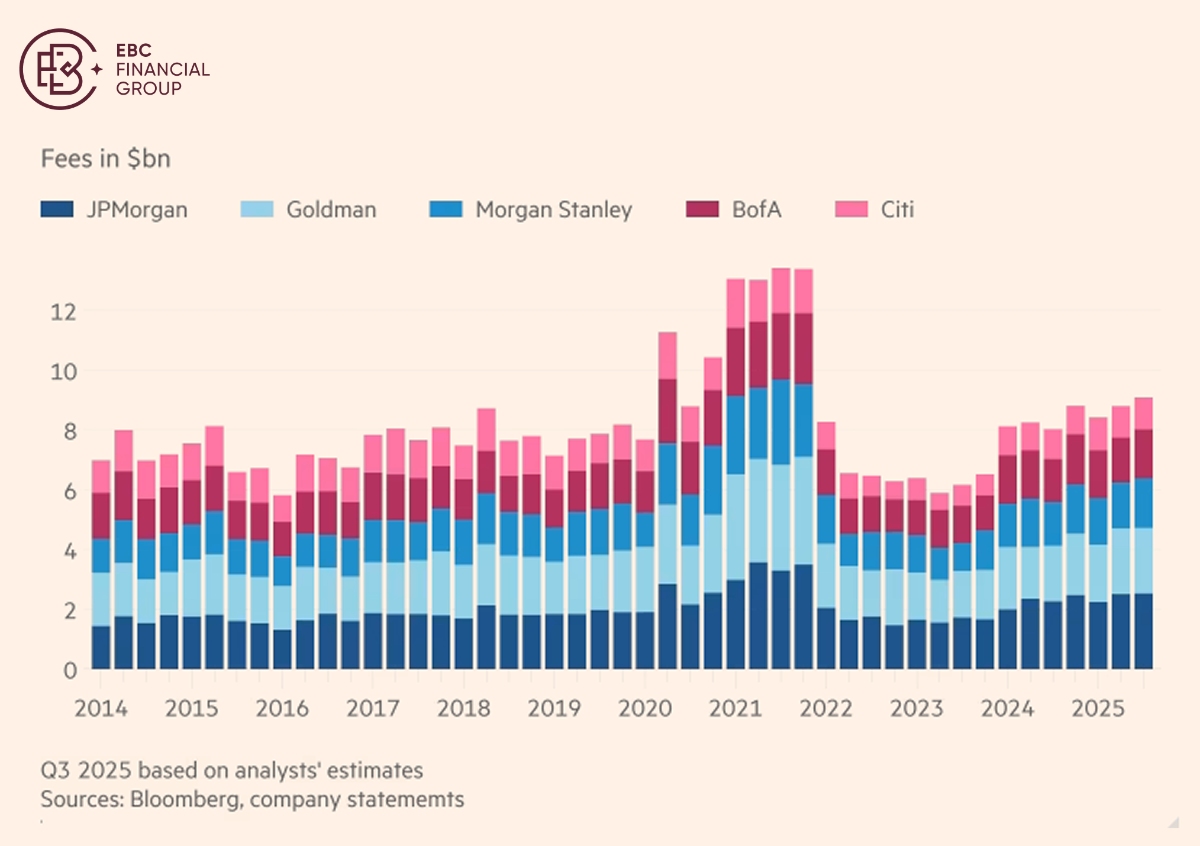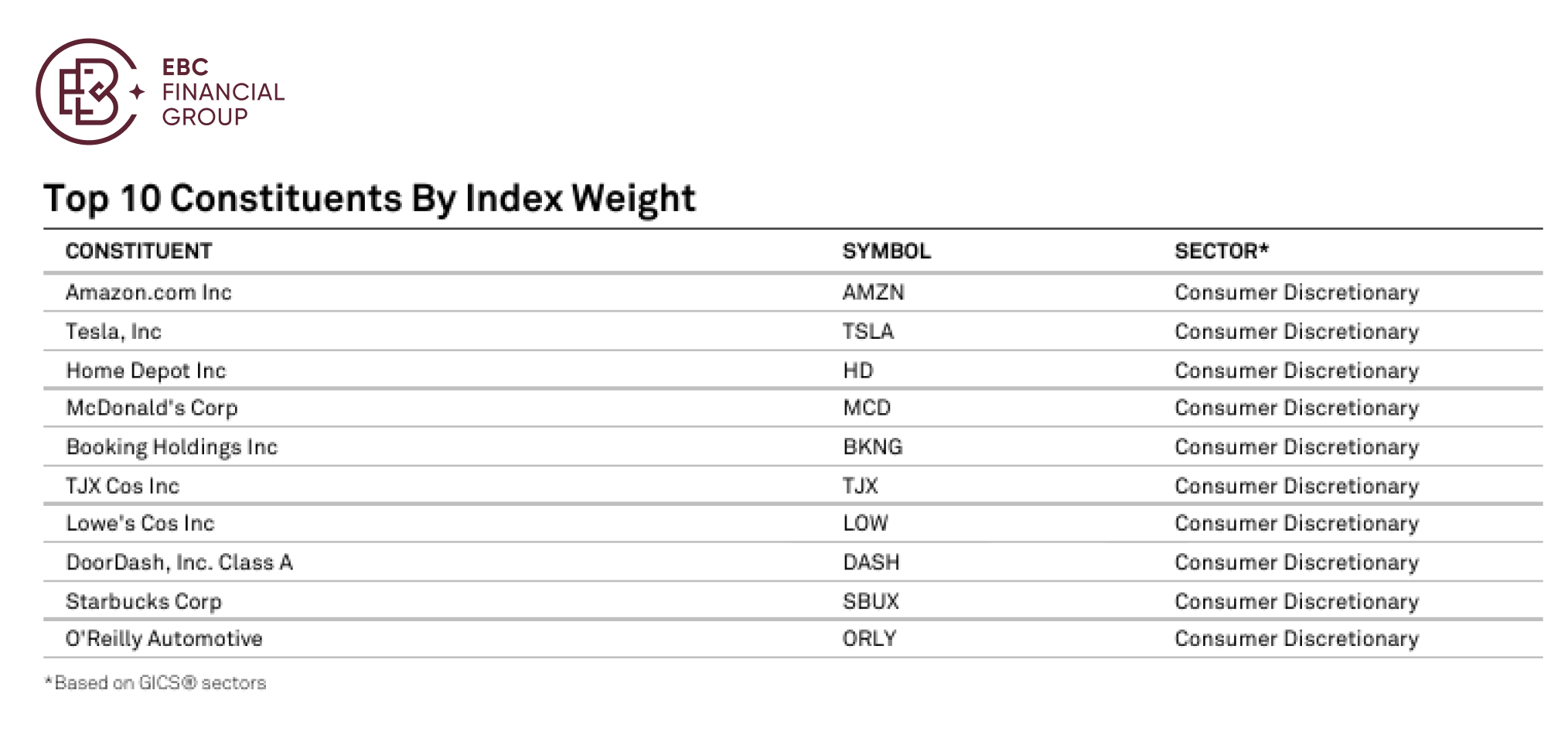Wall Street rallied on Tuesday as investors digested mostly positive
quarterly results from big banks. The Cboe Volatility Index rose to a near
five-month high before paring gains on Tuesday on renewed concerns over trade
conflicts.
Labour market remained mired in its low-hiring, low-firing doldrums through
September, though the economy overall "may be on a somewhat firmer trajectory
than expected," Fed Chair Powell said on Tuesday.
The Barclays Equity Euphoria Indicator, which measures investor sentiment
intensity based on derivatives flows, shows continued heightened bullish
sentiment among retail investors.

Much of the optimism is concentrated in the same high-flying names that have
driven this year's stock market rally. Some of FOMO buyers tapped into call
options to o make up for lost time.
Markets are seeing a lot of that, especially in the AI-related names,
Barclays said, noting such strong bullish options flows can trigger market
dynamics seen during the meme stock frenzy in recent years.
For BNPP, the condition is reminiscent of "late-cycle exuberance" in the late
90s preceding the dot-com bust. History shows once an outsized share of stocks
starts exhibiting signs of euphoria, it usually heralds diminishing forward
returns.
The financial sector appears to be a good hedge against a turn in market
sentiment. The stocks tend to benefit from a rising interest rate environment
that tends to imperil Big Tech.
Money never sleeps
The biggest Wall Street banks are riding high into Q3 reporting season.
Analysts expect profits among six major banks to climb 6% from the quarter of
last year, according to Bloomberg data.
Stocks of those banks have rallied for most of the year, lifted by a surge in
their fee businesses, improved lending margins, and a loosening of capital and
supervisory requirements from regulators.
Shares of Citigroup, Goldman Sachs, JPMorgan, and Morgan Stanley have
outperformed the S&P 500 year to date, while Wells Fargo and BofA have
performed roughly in line with the index.
Dealmaking finally shows signs of flourishing under the Trump administration.
Fears of tariffs have faded in recent months as Washington is now more willing
to approve deals and allow greater industry consolidation.

Trading businesses look encouraging. Following a period of lacklustre returns
in the 2010s, trading units have generated consistently higher revenues during
five years of heightened market volatility.
But credit environment may not be able to insulate against high interest
rates. The bankruptcies of car dealer Tricolor and parts supplier First Brands
definitely are definitely a wake-up call.
The S&P 500 Financials has increased 10.1% this year, ranking firth among
the 11 sectors. In contrast, the S&P 500 Consumer Staples and Consumer
Discretionary came in eighth and ninth place.
Purse string tightened
US companies and consumers are bearing the brunt of the country's new import
tariffs, early indications show, as opposed to Trump's assertion that foreign
countries would pay the price.
"Consumer will certainly be an area of focus. There's been a lot of mixed
trends in the consumer numbers," said Gerard Cassidy, banking research analyst
at RBC Capital Markets.
US consumer confidence declined more than expected in September amid mounting
worries over the availability of jobs. That will likely lead to further decrease
in discretionary spending specifically.
Amazon's weakness is the worst performing "Magnificent Seven" stock of the
year. AWS division is facing new threats from Microsoft and Google, leaving
investors wondering if the company is falling behind in the AI race.
Amazon Chief Executive Andy Jassy failed to provide specific guidance on the
most recent earnings call, adding to uncertainty about exactly what was going on
with the business.

Home Depot also disappointed, which can be attributed to several factors,
including a drop in consumer confidence and potential headwinds in the housing
market amid high mortgage rates.
Despite that, Robert Dietz, the chief economist of the NAHB, said he believed
the recent interest rate changes were signs that housing could be approaching an
"inflection point."
Disclaimer: This material is for general information purposes only and is not
intended as (and should not be considered to be) financial, investment or other
advice on which reliance should be placed. No opinion given in the material
constitutes a recommendation by EBC or the author that any particular
investment, security, transaction or investment strategy is suitable for any
specific person.



















